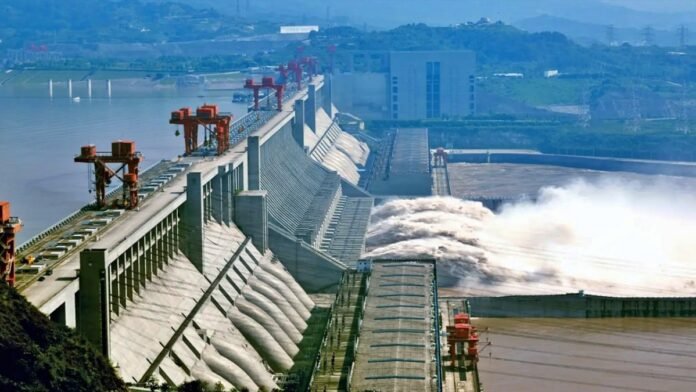
Key Points
- China has officially started building a colossal hydropower dam on the Yarlung Tsangpo (Brahmaputra) in southeastern Tibet, with a total investment reportedly around $167 billion.
- The project includes five hydropower stations and is expected to surpass the capacity of the Three Gorges Dam, currently the world’s biggest.
- Chinese authorities claim the dam will help achieve national carbon neutrality and boost Tibet’s economy, supplying electricity locally and to other provinces.
- India has expressed diplomatic concerns, warning of potential threats to downstream communities and vowing to safeguard its regional interests.
- Environmental groups fear permanent damage to the ecologically sensitive Tibetan Plateau and heightened water security tensions across international borders.
New Delhi/Beijing: China has commenced work on a monumental dam on the Brahmaputra river (the Yarlung Tsangpo in Tibet), marking a controversial milestone in Asian infrastructure. The high-profile inauguration ceremony in Nyingchi, southeastern Tibet, was attended by Premier Li Qiang and top officials. Approved late last year, the project is positioned as a critical pillar for China’s carbon neutrality and regional economic strategy.
Project Details: A Mega-Dam Set to Eclipse Three Gorges
The multi-billion-dollar venture estimated at nearly 1.2 trillion yuan ($167.1 billion) will feature five vast hydropower stations. Once completed, its generating capacity could dwarf China’s Three Gorges Dam, currently the largest in the world. Electricity produced will primarily supply the greater Chinese power grid, but also meet Tibet’s local needs.
India on High Alert: Potential Downstream Impacts
India’s Ministry of External Affairs confirmed having formally communicated its apprehensions to Beijing. The key worry: large-scale alteration of Brahmaputra water flow could have serious, even irreversible consequences for millions in India’s northeast and Bangladesh all of whom depend heavily on these river systems for drinking water, agriculture, and livelihoods.
New Delhi emphasized the need for China to honor ecologically responsible practices and coordinate transparently with lower riparian nations. China, in response, has assured India and Bangladesh of “no negative impact,” pledging to maintain dialogue on river projects.
Mounting Environmental and Geopolitical Worries
Beyond diplomatic unease, environmental experts highlight the grave risks posed by such mega-projects on the fragile Tibetan Plateau calling out threats to biodiversity, disruption of sediment cycles, and the potential for landslides or floods if dam integrity is ever compromised.
The cross-border setting of the Yarlung Tsangpo/Brahmaputra also underscores the growing strategic rivalry between India and China, both of whom have engaged in drawn-out border disputes and maintain substantial military deployments along the Himalayan frontier.
What Happens Next?
- India is actively monitoring construction, with officials warning that any move that endangers water security could prompt diplomatic or technical countermeasures.
- Environmentalists are pressing for independent impact assessments and greater regional cooperation to ensure sustainable development.
- With the project set to become the world’s largest hydropower facility, its progress will be closely watched for regional and global repercussions.





















































